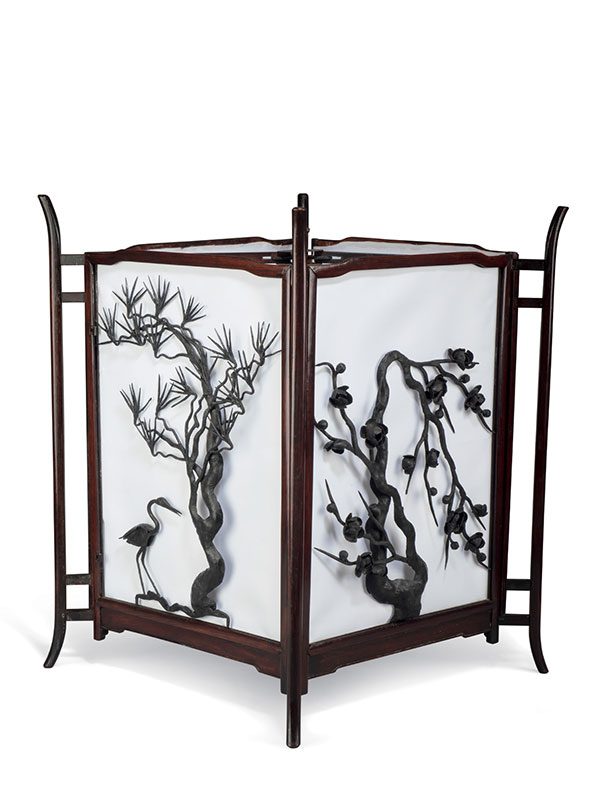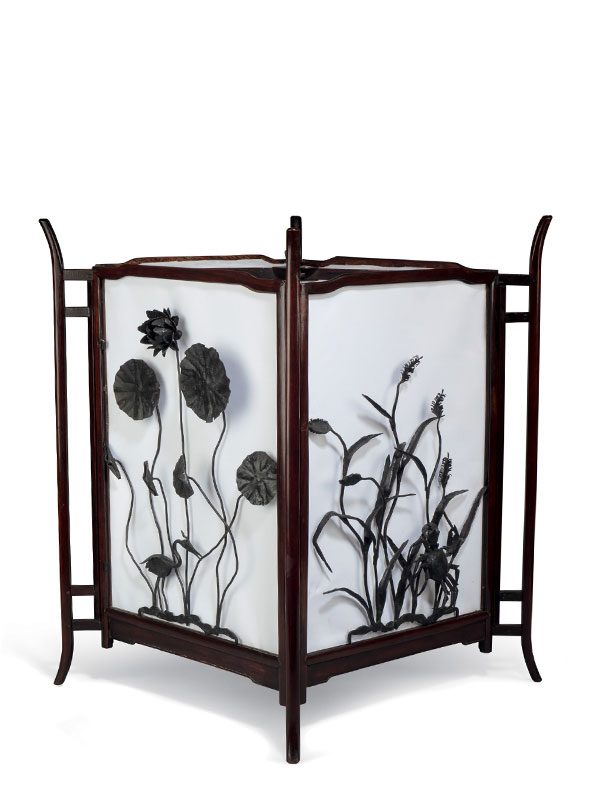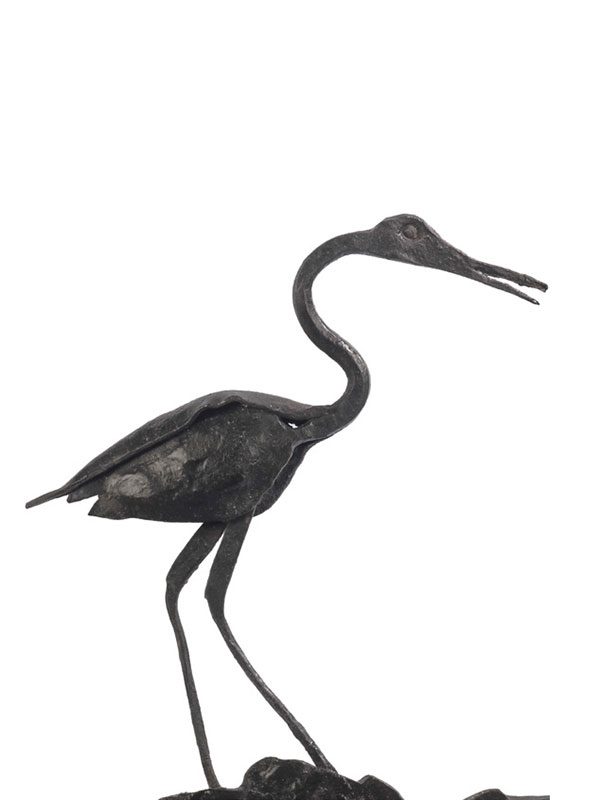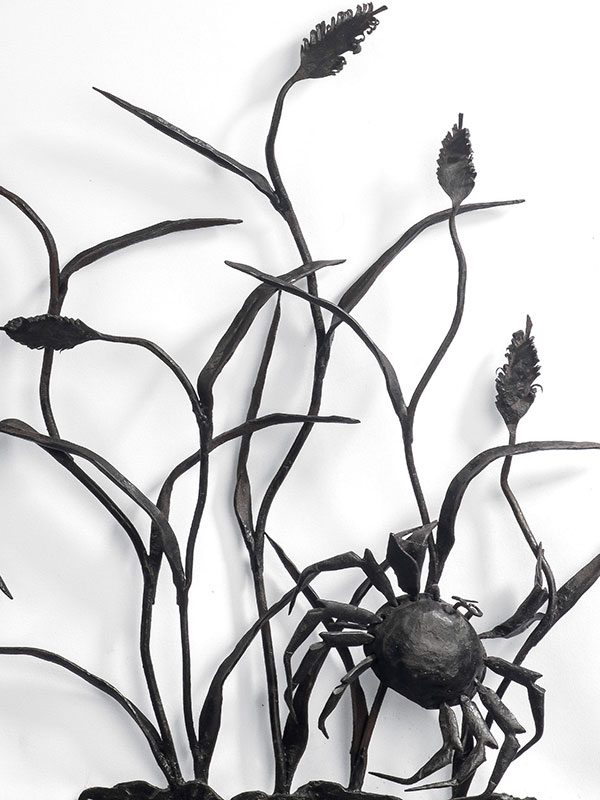Pair of hongmu and iron folding lanterns
A pair of folding lanterns of square shape. The four corners of each lantern are fitted with hongmu struts with protruding, flared ends. Each lantern is fitted with four panels of so-called ‘iron-painting’, depicting respectively a gnarled branch of flowering prunus, orchids, chrysanthemums, bamboo, a lotus pond, a grapevine, a pine tree with a crane and reeds with a crab. The delicately rendered ‘paintings’ are all made of wrought-iron elements, which are crafted individually and bolted together. Each iron painting is removable and secured to the main structure with four horizontal short posts. They can be rearranged in various ways. The lanterns are hung from brass hooks.
This pair of lanterns of excellent quality and of court lantern style was probably used in a noble household or in a court setting. The birth of tiehua was attributed to a Wuhu blacksmith, Tang Peng (also known as Tang Tien-chi, 1644 – 1722), who was inspired by Chinese ink paintings depicting landscapes by the painter Xiao Yun-Cong (1596 – 1673) and who vied to recreate these paintings in iron.[1] The dramatic effect of shafts of light emanating through the iron paintings of these lanterns can be imagined. A set of 18th century iron paintings of four plants representing the four seasons is in the collection of the British Museum, one of which is illustrated by Jenyns.[2] Other comparable iron paintings depicting four plants are in the John Reilly Jr. collection and illustrated in The Romance of Chinese Art.[3] A set of four iron paintings from the Shanghai Museum, dated to the 17th century, including one with comparable prunus branches, was included in the exhibition The Chinese Scholar’s Studio: Artistic Life in the Late Ming Period in 1987.[4]
- Jenyns, R.S. and Watson, W., Chinese Art, vol. II, Phaidon, Oxford, 1980, p.104
- Jenyns, R.S. and Watson, W. op. cit., no. 72, p.104
- Hobson, R. L. The Romance of Chinese Art, 1929, Garden City Publishing, New York, pl. 46-6, p. 163
- Li, C. T. and Watt, J. C.Y. eds, The Chinese Scholar’s Studio: Artistic Life in the Late Ming Period – An Exhibition from the Shanghai Museum, Thames and Hudson, New York, 1987, pp. 120-121, no. 68




